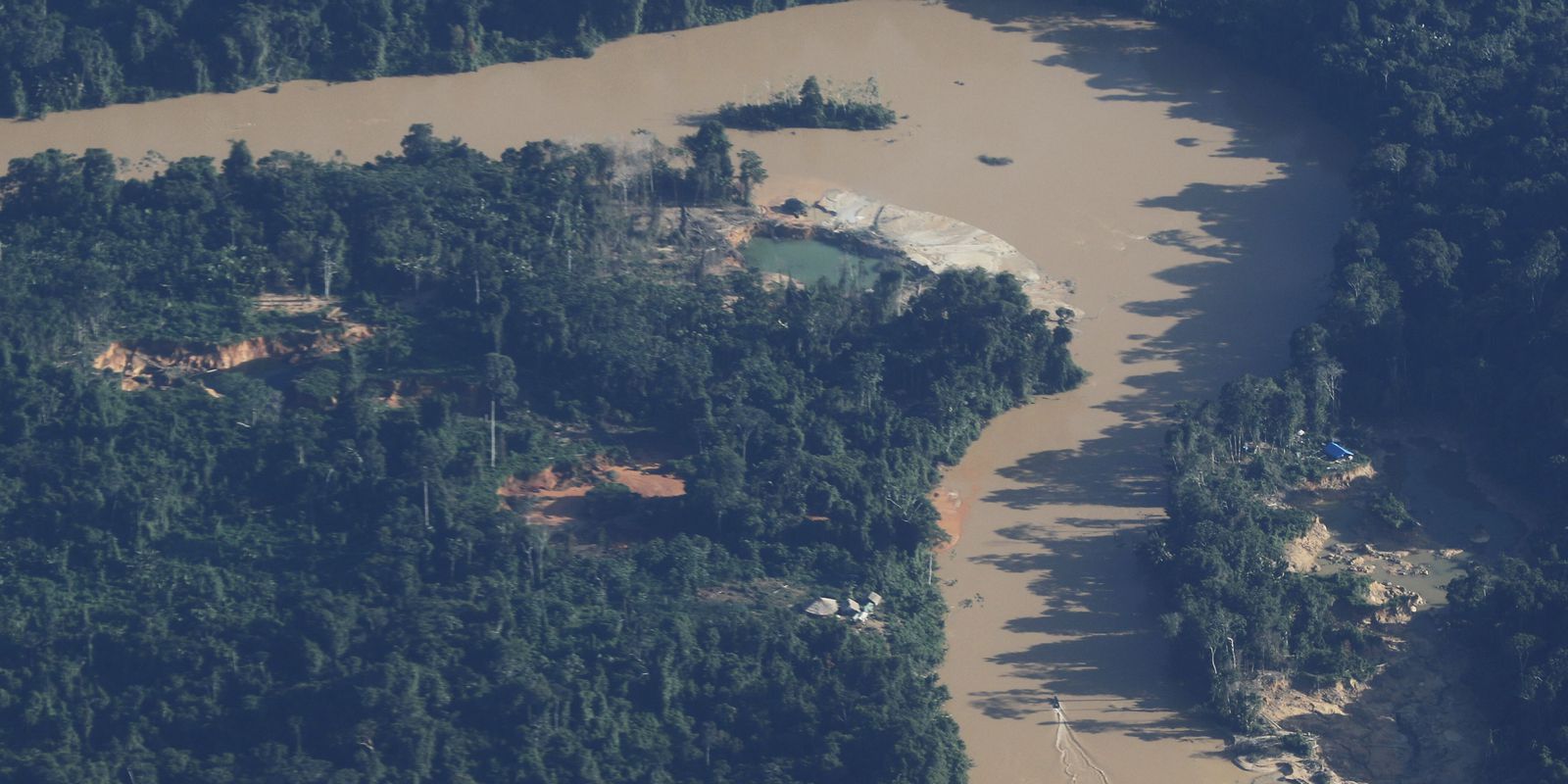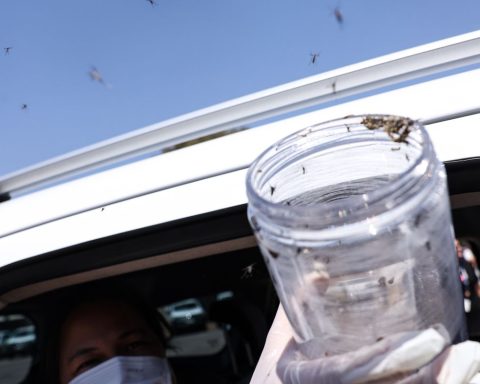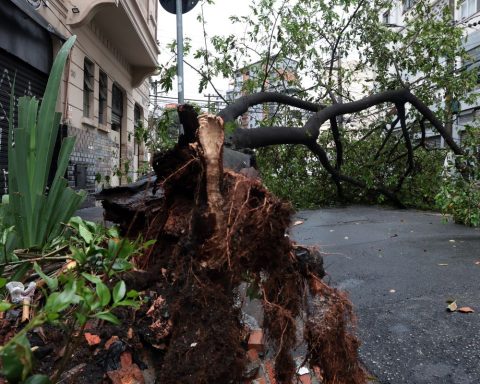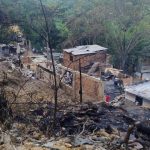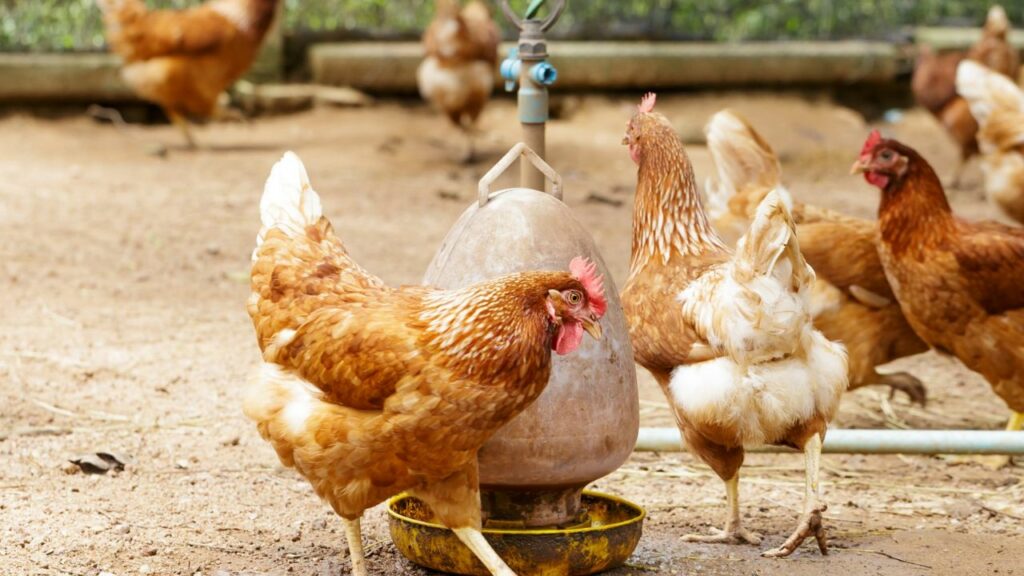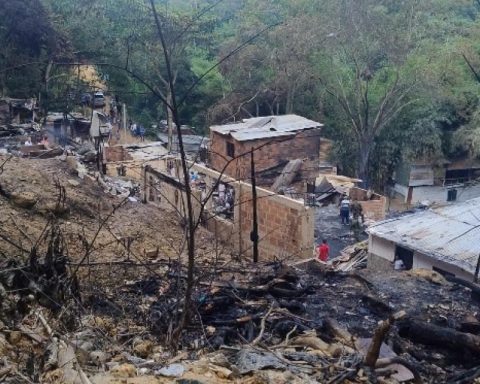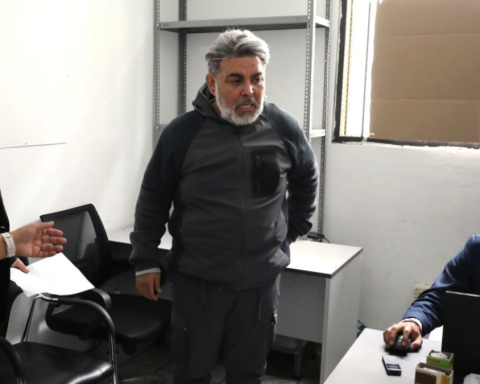The invasion of prospectors in the lands where the Yanomami people live, that is, the west of Roraima and the north of Amazonas, is not a new phenomenon. In the 1970s, government initiatives encouraged mining in the region. In the 1980s, the “gold rush” came.
But it was in recent years that illegal mining reached another level, advancing through territories that, until then, were still free of gold exploration activity, according to Júnior Hekurari Yanomami, an indigenous leader interviewed by the report by the Brazil Communications Company (EBC).
Júnior Hekurari is president of the District Council of Yanomami Indigenous Health (Codisi-YY) and of Urihi – Associação Yanomami. He has been an active voice in trying to resolve the emergency humanitarian situation of his people.
The leader says that mining “has always existed” in some areas of Yanomami territory but that, since 2019, the situation has gotten much worse. “At Uraricoera, there were always some ferries. It was about ten. Before 2016, 2017, there were only 2,000 prospectors in the Yanomami indigenous land. In 2019, I entered the communities, mainly Parima, Xitei, Homoxi. I did the education, health meetings. we didn’t see [garimpo] how are you now. In 2020, during [a pandemia de] covid-19, has advanced a lot, even in the Keta community”, says Júnior.
According to him, a road was recently opened that goes to the source of the Mucajaí River, which made the situation a lot worse. “It was total damage. There were no miners in these communities in 2019. When I went there in 2021, I thought: ‘My God, what happened here?’
Júnior says that the arrival of mining began to generate new problems for communities that had not yet experienced this type of invasion.
“A shaman who lived in the community of Xitei fled because of the presence of miners. He couldn’t do shamanism. He was a lot of noise from the engines. The mine was 50 meters away [da comunidade]. How are you going to be able to concentrate and do the ritual? He [chegou a fazer] a meeting. Some communities gained many firearms [dos garimpeiros], such as shotguns, pistols. This leadership was against it and left for the Minaú region. In Minau, there is no [garimpo]”, says Júnior, adding that today there are few Yanomami areas free of mining.
One report released in April 2022 by the Hutukara Yanomami Association, led by Davi Kopenawa Yanomami, and by the Instituto Socioambiental, a non-governmental organization (NGO) that defends indigenous rights, based on data collected in the previous year, showed that 2021 was, until then, , the year of greatest destruction caused by illegal mining in the region.
“It is known that the problem of illegal mining is not new in TIY [Terra Indígena Yanomami]. However, its scale and intensity has grown impressively over the past five years. Mapbiomes data [ONG de mapeamento do uso do solo] indicate that from 2016 onwards, the mining destruction curve took on an upward trajectory and, since then, has accumulated increasingly high rates. According to the platform’s calculations, from 2016 to 2020, mining at TIY grew by no less than 3,350%,” says the report.
According to the Hutukara document, from 2020 to 2021 alone, the destruction caused by mining in TIY grew by 46%. “This is the highest growth observed since we started our monitoring in 2018, and possibly the highest annual rate since the demarcation of the TIY in 1992”, highlights the report. “Garimpão has not only grown in area, but has also spread to new regions of the Yanomami territory”.
The report shows that among the areas with the greatest increase in illegal mining in recent years are Waikás, Homoxi, Kayanau and Xitei. In Xitei, growth was 1,000% year on year. Some areas did not show any degree of degradation by mining in 2020 and started to register the following year, such as Auaris (in the extreme northwest of Roraima), Parafuri and Waputha.
A new survey carried out by Hutukara and the Instituto Socioambiental showed that illegal mining advanced even further in the following year. Satellite images revealed 54% growth in deforestation, caused by the extraction of gold in the Yanomami Indigenous Land from 2021 to 2022.
Radar in the Amazon
According to the Pró-Yanomami Commission (CCPY), an NGO created in the 1970s to defend this indigenous population, in 1975 the Radar in the Amazon project (Radam) discovered mineral deposits such as tin, copper, nickel, zinc, silver and diamond, besides cassiterite and gold.
Soon after, an influx of prospectors began to enter the indigenous land, especially the Surucucu area, to explore the cassiterite deposits, with the support of landing strips that were opened there.
At the same time, the military government began to implement its plans for national integration in the region, with the opening of a highway, Perimetral Norte, and programs for the colonization of the area by non-indigenous people. Companhia Vale do Rio Doce, at the time a state-owned company, also carried out surveys in this land.
Conflicts with the napëpë
This first contact already generated the first conflicts and problems for the Yanomami people, an ethnic group that lived relatively isolated until then (despite the first contacts with the napëpë, or “white man” having occurred in the first half of the 20th century).
According to CCPY, the contact of the first prospectors caused the spread of venereal diseases, tuberculosis, flu outbreaks and deaths among the Yanomami. The natives’ gardens also began to be attacked by the invaders, in search of food.
In 1980, according to the Pro-Yanomami Commission, gold is discovered in the Ericó region, attracting more than 5,000 men in the Santa Rosa mine alone. The influx of prospectors to Yanomami land continued throughout the 1980s and culminated in what the Instituto Socioambiental, another NGO protecting indigenous peoples, called the “gold rush” between 1987 and 1990.
This, despite the fact that the federal government decided to interdict part of the Yanomami land to protect the indigenous population, in 1982, and later create the Yanomami Indigenous Park, in 1984.
Despite government action to remove the miners in the early 1990s, illegal gold mining continued in the area. In 1993, the criminal action of a group of invaders resulted in the death of 16 Yanomami, in the region bordering Venezuela with Brazil, in the episode that became known as Massacre de Haximu.
Five garimpeiros were convicted of genocide for the murders in 1996, in what was the first conviction of this type of crime in Brazil.
*Ana Graziela Aguiar – Reporter for TV Brazil
